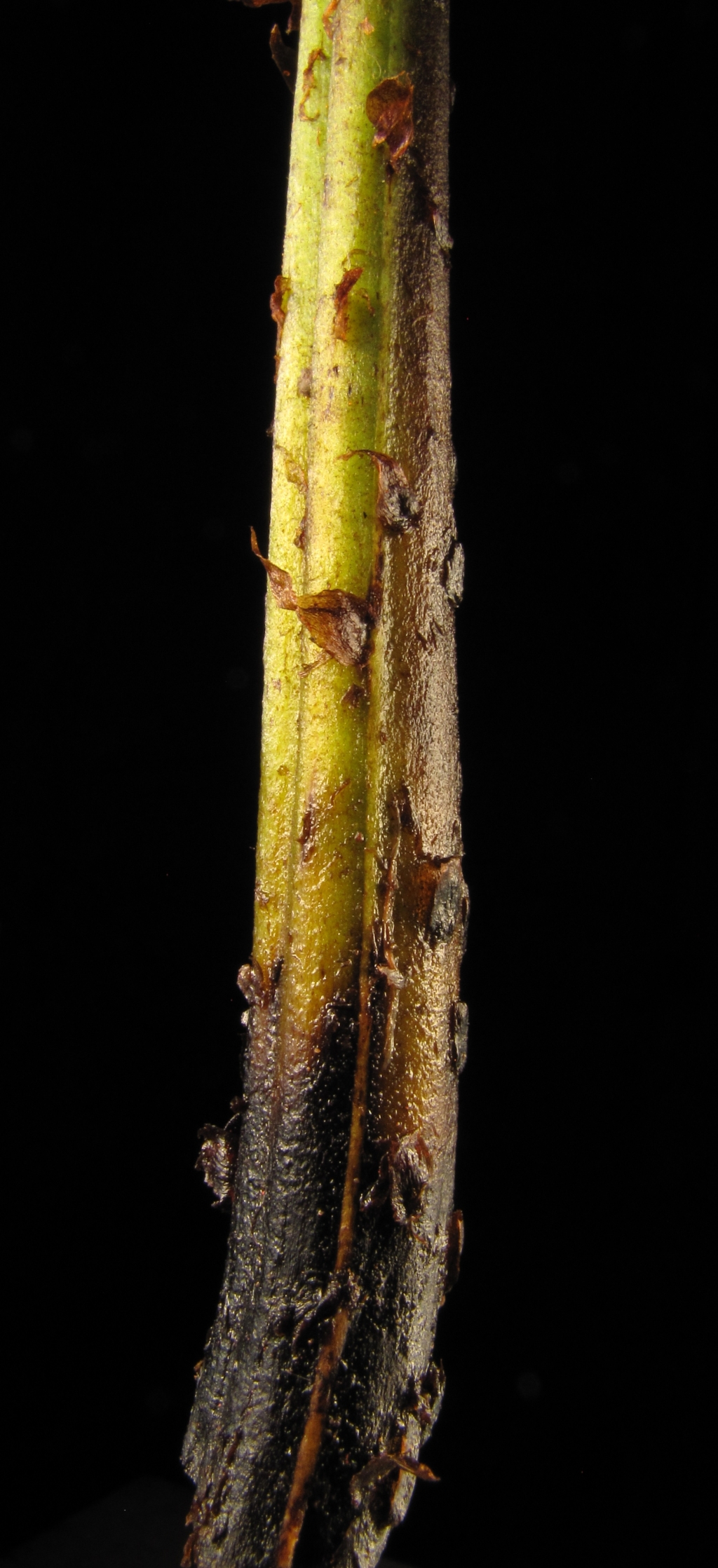Diplazium australe
(R.Br.) N.A.Wakef.Rhizome short, stout, erect to oblique, covered in scales; old stipe bases retained, sometimes forming small trunk to 20 cm tall. Fronds clustered, erect to drooping, 50–150 cm long. Stipe about equal in length to lamina, coarse, base expanded, fleshy when young, green to brown, flattened on upper surface, grooved; scales papery, ovate, acuminate, numerous near base, scattered above and on rachises. Lamina 2–3-pinnate, broadly triangular, mid-green, glabrous and soft; grooves on upper surface of rachises and midribs confluent, with raised flanges formed at the junctions. Primary pinnae shortly stalked, oblong, 15–40 cm long, apices narrowing; secondary pinnae lobed or pinnate, rachises winged; pinnules sessile, oblong, lobed or bluntly toothed; veins simple or forked. Sori obliquely angled to midvein, oblong, basal sori often paired; indusium membranous, inflated, sausage-shaped, opening to leave irregularly torn edges.
VVP, GipP, OtP, WaP, CVU, EGL, EGU, WPro, HSF, HNF, OtR, Strz, MonT, HFE. Found in wetter, deeply shaded, forests, gullies and creek-flats in southern Victoria.
Characterized by large tufted fronds with a soft, thin glabrous lamina, and a rachis groove that continues into the mid-vein of the pinnae and has a distinctive green flange.
Entwisle, T.J. (1994). Ferns and allied plants (Psilophyta, Lycopodiophyta, Polypodiophyta). In: Walsh, N.G.; Entwisle, T.J., Flora of Victoria Vol. 2, Ferns and Allied Plants, Conifers and Monocotyledons, pp. 13–111. Inkata Press, Melbourne.
 Spinning
Spinning


